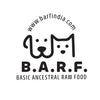Winter nutrition? Here’s how you can ensure the right nutrition for your dog this winter
The monsoon has just ended and before you know it, winter will be upon us. It’s time to bring the woolens out and get ready for the nip in the air. But what about our furry family members? Winter nutrition? Luckily for them, the fur does the job of insulating them from the cold, but there is much more that connects this season and your dog’s health.
More than being just a change of season, we must look at managing a change in the dog’s daily diet. While we are aware that we must eat different vegetables and fruits in winter, we don’t seem to do the same for our pet dogs. Most pet parents are unaware of the significance of switching the dog’s nutritional regimen in these cold months.
But fret not. We have gathered all our knowledge and put together for you certain tips on how you can make small changes in your dog’s diet and keep them healthy in the next few months.

Let’s begin
Let’s first understand why a change of diet is required in the first place. When winter comes around, the weather affects dogs just as it impacts us and our routines. Dogs may change exercise and eating habits because of the cold weather. Studies have shown that dogs require more calories to stay warm in chilly temperatures. You may say that you put on sweaters on your pooch and feed them bigger meals, and that is great. But some dogs don’t like dressing up and if it’s too cold, some of the smaller breeds might have trouble eating enough to stay healthy.
Then there are those who will continue to eat the same amount of food as they do other times, but because of the cold, they get far less exercise. And this can turn them into fat couch-potatoes. And a fat dog is in no way a healthy dog.
Let’s jump straight into it. 5 winter nutrition tips that will help your dog stay healthy through the cold season.
Increase calories
If your dog loves winter and likes to spend his time outside, you must look at increasing the amount of food that you offer him. Instead of feeding one or two meals a day, move to smaller but more frequent servings. Add some warm, no-salt chicken broth to the food to make it more appetizing. If your dog is showing signs of food pickiness, this will definitely increase food intake by about 10%.
Reduce treats
Pay attention to what your dog gets to eat. If he is going to laze the winter away, then you must reduce empty carbs and definitely cut down on treats and table scraps. Focus on keeping his waist trim. If you can’t reduce or stop treats, look for healthier low-calorie options instead. Don’t let food be lying around for him to eat as and when he pleases, but measure it up carefully to monitor daily calorie intake.

Pay attention to coat
The only thing keeping your dog snug and warm in winter is his coat. And its condition is directly related to the nutrition he receives. Does your dog have food allergies? This can lead to a dry, rough and thin coat. Winter is a good time to evaluate what your dog eats and how it impacts his fur. Have you considered switching from kibble to raw food?
Maintain skin health
Your dog’s skin health is equally important during winter. Just like us, they can be prone to dry and cracked skin, which can worsen during winter. To prevent dry, chapped or cracked skin or paws, make sure your dog’s diet includes plenty of foods that contain a lot of omega fatty acids.
Supplement. Supplement. Supplement.
We can’t say this enough. Even if your dog is on
species-appropriate raw food, winter is a time when he could need more supplements. It could be something that aids digestion or aid for those painful arthritic joints that swell up in winter. Talk to your vet and decide on the best supplements to help your dog make the transition through winter seamlessly.
Keep your dog hydrated
Winter is a dry season and this can increase the chances of dehydration in your dog. Always keep water out for him so that he can lap whenever he feels like it. If he seems to be drinking less water you can add some to his raw food and make sure he gets enough hydration.

Make a gradual change
Don’t make a sudden transition. That will mostly lead to the dog to rejecting his food, or worse, could cause digestive complications like diarrhea or vomiting, which can cause tremendous dehydration. Instead, offer new or changed foods slowly. Mix the new foods with the old half-and-half for the first few days. Increase the new food gradually while decreasing the old. Continue this over a week or 10 days until the dog’s food only includes his winter diet.
Conclusion
As a responsible pet parent, we must adjust our pet’s diet during the winter months to help them get the best nutrition possible. Follow these basic guidelines and all will be cool.




